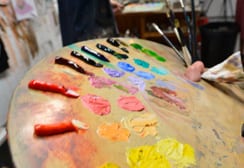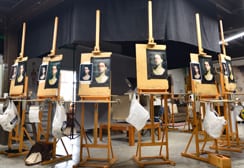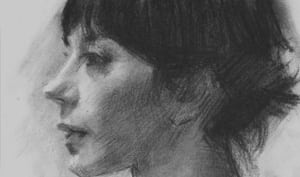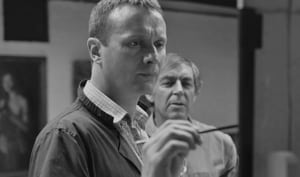Step 14: Painting the Hair – Portrait of Lisa
Painting the hair. The final step is to refine the hair so it supports the overall portrait without overpowering the features. Hair should be treated as masses of form, not individual strands, and integrated with attention to edges, light flow, and structure.
- Think in Masses, Not Strands
• Begin by reinforcing the large shapes of the hair—group areas into light, midtone, and shadow to establish volume.
• Avoid over-detailing too early. Hair reads more convincingly when painted in broad, directional masses.
• Use subtle colour shifts (warm and cool tones) to suggest light bouncing within the hair, rather
than trying to replicate every hair individually.
- Observe the Hairline
• The hairline, particularly when the hair is scraped back from the face, should have soft, irregular edges.
• Avoid hard, uniform lines—real hairlines are broken, feathery, and diffuse in areas, especially around the temples, forehead, and nape.
• Use blending, dry brush, or soft feathering to create this transition between skin and hair. - Structure and Flow
• Consider the underlying shape of the skull when modelling the hair. It should follow the form of the head, not float separately from it.
• Pay attention to directional flow—how the hair moves over and around the cranium. This gives a sense of natural movement and structure.
• Highlights should follow the curvature of the form, not sit flatly on the surface. - Edge Control and Final Accents
• Use a combination of lost, soft, and sharp edges in the hair:
o Soft edges where the hair meets the forehead, cheek, or neck.
o Lost edges where shadow areas of the hair blend into the background.
o Sharpened accents or highlights only where you want to draw attention or describe texture (e.g. around the crown, or a few catchlights on strands).
• Keep the values of the hair connected to the overall lighting scenario—darker in shadow, with coherent highlight placement.
By treating the hair as a form rather than fine detail, and softening transitions at the hairline, you maintain a focus on the portrait’s structure and expression while giving the hair natural presence and realism.






